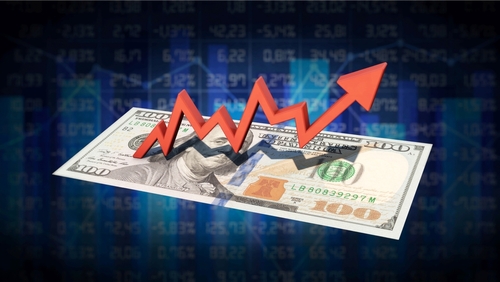

Central banks globally have begun their tightening cycles in earnest. In July, the Federal Reserve (Fed) hiked interest rates 75 basis points (bp) in the battle against inflation. It was the second supersized hike in a row, and more hikes are on the cards – threatening to tip the US into recession. Perhaps surprisingly, though, the market read the FOMC meeting as dovish. But why was that? And how do interest rate traders price policy expectations?
In this Explainer – the first in a series – we look at the Fed and pricing via the Federal Funds (FF) futures market. In this era of aggressive rate hikes, knowing how the markets price the policy path will be a key advantage for investors and traders.
Interest rate traders dynamically react to economic data and Fed communications on a real-time basis. These moves reflect the response of practitioners to new information. However, the way the market sees the evolution of the current hiking cycle is not necessarily the same thing as how economists or strategists see it.
The market view is doubtless somewhat informed by the views of policy experts and commentators, but there are other additional inputs into the market’s determination of where rates are going. And while economists and strategists use econometric (and other) predictive models to forecast Fed policy, market pricing often conflicts with the view on ‘the Street’, consensus or otherwise.
Every data point matters, as do Fed communications. Perhaps the most powerful information market pricing conveys is how traders are positioned. This can be used as a gauge of sentiment, and it can dynamically foreshadow further market moves based on existing positioning. Importantly, recent market pricing has broadly tilted more dovishly than analyst expectations.
When it comes to Fed expectations, the key market to focus on is the FF futures market. The underlying FF rate refers to the effective federal funds rate (EFFR) published by the New York Fed, and FF futures prices are based on the EFFR.
These futures are traded on the Chicago Mercantile Exchange (CME), with an overview of the contracts to be found here. In the generic description of the FF contacts, the CME says that FF ‘futures are a direct reflection of collective marketplace insight regarding the future course of the Federal Reserve’s monetary policy.’
The FF futures strip contains 12 one-month contracts per calendar year, and therefore provides a granular view of market expectations for future Fed policy. Each of these individual monthly contracts are known collectively as a strip.
FF futures are traded in International Money Market (IMM) index terms. This means that the futures are traded as a price rather than as a rate.
The price is calculated very simply – it is the implied rate subtracted from 100. Looking at the current August 2022 FF futures contract, the closing price on 9 August 2022 was 97.665, or an implied yield of 2.335%.
Given that the current FOMC FF target rate is 2.25%-2.5% after the rate rise on 27 July, the August 2022 FF futures contract tells investors that there will be no change in Fed policy this month. Given that the central bank is not meeting until next month, this is no great surprise.
At the close of business on 9 August, implied yields on the FF futures strip keep rising until the end of April 2023, with the peak implied yield coming in at 3.68% (the March 2023 FF futures contract has a price of 96.32).
This means that the market expects ~135 basis points (bps) of further FOMC tightening by the end of April next year (i.e., the difference between the 9 August closing price for the August 2022 contract and the April 2023 contract.)
It gets interesting in April and May 2023, as this is where the FF futures curves flips. The May 2023 contract closing price on 9 August was 3.5bp higher (i.e., the implied yield is 3.5bp lower) than the April 2023 contract, with the implied yield on the June 2023 contract another 5bps lower. This means that the market expects the Fed to have probably completed this current tightening cycle in the first quarter of next year (Chart 1).
Implied yields become progressively lower in the months following April 2023, with the implied FF yield on the December 2023 contract closing 48.5bps lower than the peak in April (based on 9 August closing prices).

On 27 July, Fed Chair Jerome Powell stated that the central bank is now data-dependent regarding any future moves on policy. The FOMC will assess policy based on readings including ‘public health, labor market conditions, inflation pressures and inflation expectations, and financial and international developments.’
Market reaction was dovish to Powell’s remarks, with the December 2023 FF contract closing at 97.26 (an implied rate of 2.74%) on 29 July, versus a close of 97.235 (an implied rate of 2.765%) a week before (Chart 2). This is even after the Fed hiked rates.

Several FOMC officials have pushed back against the FF futures dovish tilt post-Powell and have talked up the likelihood of further rate hikes in the coming months. This has led to a hawkish repricing, with the December 2023 FF contract closing at 97.075 (an implied rate of 2.925%) at the close on 9 August.
FOMC watchers should expect ongoing volatility in Fed pricing. The best way to monitor market expectations of the central bank’s policy path is through the FF futures strip.
Spring sale - Prime Membership only £3 for 3 months! Get trade ideas and macro insights now
Your subscription has been successfully canceled.
Discount Applied - Your subscription has now updated with Coupon and from next payment Discount will be applied.